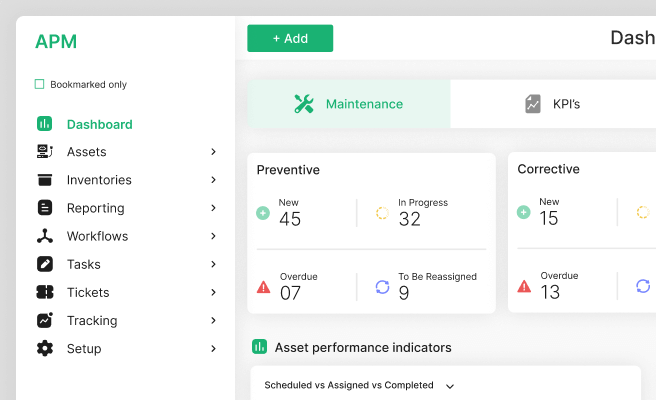Abandonment Rate
<p>Abandonment rate is a critical metric that measures the percentage of users who leave a process before completing it. This is particularly important in areas like e-commerce checkout processes, form completions, or any multi-step user interactions. High abandonment rates can indicate user frustration, a disconnect between user expectations and actual experience, or technical issues.</p>
<p>In the context of climate tech, understanding and optimizing abandonment rates can significantly impact user adoption and engagement with sustainable digital products. For example, a climate-tech company developing an app for carbon footprint tracking must ensure a smooth and intuitive user experience to minimize abandonment rates and encourage consistent usage.</p>
<h2>Factors Contributing to High Abandonment Rates</h2>
<p>Several factors can contribute to high abandonment rates:</p>
<ul>
<li><b>Complex Navigation:</b> If users find it difficult to navigate through the process, they are more likely to abandon it. Simplifying navigation and providing clear instructions can mitigate this.</li>
<li><b>Slow Load Times:</b> Users expect quick responses from digital products. Slow load times can frustrate users and lead to higher abandonment rates. Implementing efficient coding practices and optimizing server responses can help improve load times.</li>
<li><b>Lack of Trust:</b> Security concerns, especially in e-commerce, can lead to abandonment. Displaying trust signals like SSL certificates, secure payment gateways, and customer reviews can help build user trust.</li>
<li><b>Excessive Steps:</b> Lengthy processes with too many steps can deter users. Streamlining the process and reducing unnecessary steps can enhance user experience and reduce abandonment rates.</li>
</ul>
<h2>Measuring and Analyzing Abandonment Rates</h2>
<p>Tools like <a href="https://analytics.google.com" style="color: #2896FF; text-decoration: underline;">Google Analytics</a> and <a href="https://www.hotjar.com" style="color: #2896FF; text-decoration: underline;">Hotjar</a> are valuable for tracking and analyzing abandonment rates. These tools can provide insights into user behavior, helping identify where users are dropping off in the process.</p>
<p>For instance, Hotjar’s heatmaps can visually represent user engagement on different parts of the page, revealing areas where users may be experiencing difficulties. Additionally, session recordings can offer a detailed view of user interactions, allowing for a deeper understanding of the user journey.</p>
<h3>Case Study: Improving Abandonment Rates in Climate Tech</h3>
<p>Consider a climate-tech startup focused on developing an app for monitoring energy consumption in smart homes. Initially, the app faced high abandonment rates during the setup process. By analyzing user behavior through session recordings and feedback, the team identified that users were dropping off due to a complicated multi-step setup process.</p>
<p>The company decided to streamline the setup process by reducing the steps required and incorporating visual guides and tooltips. They also optimized the app’s load times and added trust signals to assure users of data security. These changes resulted in a significant reduction in abandonment rates, leading to higher user engagement and satisfaction.</p>
<h2>Strategies to Reduce Abandonment Rates</h2>
<p>To effectively reduce abandonment rates, consider the following strategies:</p>
<ul>
<li><b>Optimize User Interface (UI) and User Experience (UX):</b> Ensure that the design is intuitive and user-friendly. Conduct <a href="https://www.nngroup.com/articles/usability-testing-101/" style="color: #2896FF; text-decoration: underline;">usability testing</a> to identify and rectify pain points in the user journey.</li>
<li><b>Personalization:</b> Tailor the experience to individual user preferences and behaviors. Personalized experiences can keep users engaged and lower abandonment rates.</li>
<li><b>Clear Communication:</b> Use clear and concise language to guide users through the process. Provide progress indicators to show users how much of the process is left.</li>
<li><b>Incentives:</b> Offer incentives like discounts or free trials to encourage users to complete the process.</li>
</ul>
<h2>Conclusion</h2>
<p>Monitoring and optimizing abandonment rates is crucial for enhancing user experience and achieving business goals. By understanding the factors contributing to high abandonment rates and implementing strategies to address them, companies can improve user retention and satisfaction. In the climate tech sector, this translates to higher adoption rates of sustainable digital products, ultimately contributing to environmental sustainability and user engagement.</p> <p>To understand the power of design across industries and sectors, view our diverse portfolio of works. <a href="https://www.whatifdesign.co/work" style="color:#2896FF; text-decoration:underline;">View our portfolio</a>.</p> <p>Increase user engagement that converts your demos into sales. Optimise your UX strategies with our audits.
<p>Fill out the <a href="https://tally.so/r/n97pxQ" style="color:#2896FF; text-decoration:underline;">UX Audit form</a> to get started. Ready to discuss your needs? <a href="https://cal.com/akhilak/what-if-design?duration=25" style="color:#2896FF; text-decoration:underline;">Book a consultation call</a> with us today.</p></p>

Let's scale your impact with great design.
Free consultation, no sales pitch
Thank you! Your submission has been received!
Oops! Something went wrong while submitting the form.
Let’s talk
Nothing great is built alone.
Let’s connect about your vision, our work and how we can collaborate.
Get in touch

